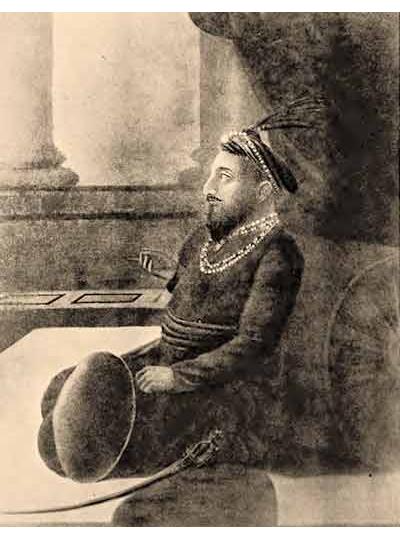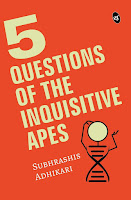Alexander the Great Mozaic (Wiki)
After a day of acclimatization for the oxygen starved high altitudes of Ladakh we started our long drive towards Dah to meet Alexander’s kin. It was a hot sunny day and we had to stop 5 kilometres short of Dah. The heat from the scorching sun has melted too much snow, raising the height of water in the river to dangerous levels. Indus, the mighty river that Alexander once crossed to enter India, has overflowed and blocked our path to Dah. But it happened to be our lucky day.
We came to know from the locals that there is another region where the so-called ‘Pure Aryans’ live. We took a difficult curvy road, up the mountain, to reach the Sanith village that consisted of only 24 houses. The people here look and speak a language different from the Ladakis. These Western Ladakhi people belong to Brokpas or Minaro tribe and speak archaic Shina language. They can be easily identified by their flowery headdress. They prefer to call themselves ‘pure Aryan’ whose ancestors were part of Alexander’s lost army.
My driver insisted that they speak Aryan language that is a mixture of Hindi and English. Interestingly, though he understands both English and Hindi, he cannot decipher their language. Genetic studies done on the people of Brokpas or Minaro tribe show only a faint Greek connection. As we saw earlier, ‘Aryan’ is not a race, rather a linguistic division. Whatever their origin is, our romanticism with fair skin helps this little isolated tribe with tourism. Being ‘pure Aryans’ did not bring tourism; rather it was tourism that made them ‘pure Aryans’.
Brokpas
Alexander III of Macedon was one of the greatest kings of the ancient world. His father, King Philip, was a great soldier who carved out a powerful army. His mother, Olympias, was a fierce tribal princess who kept snakes as pets. According to rumours, Olympias was struck by a bolt of lightening and was visited by the king of gods, Zeus, when she was pregnant. Hours later Alexander was born. Born under the sign of Leo, the king of beasts, Alexander was destined to achieve greatness. In a single decade he forged an empire as large as the ones Roman Empire accumulated over centuries.
Alexander in Persia
While many tribes have entered India over the ages, Alexander is considered as the first king to have crossed the Indus. There are lots of myths surrounding the legend of Macedon. Thousands of years ago, when the gods walked with the mortals, Indian saints unravelled the mystery of immortality. The magic was found in the juice of Soma plants, growing in the banks of the great Indus River. Alexander the Great, known locally as Sikander, came to know about it and wanted to find it so that he could rule the world eternally. In his voyage, he befriended a local person who was guiding him towards the secret and sacred place. After a point of time they parted ways to make the search quicker. One day, accidentally, a dried fish fell into a spring from the hand of Sikander’s friend. To his surprise, the dead fish came back to life and swam away. Sikander’s friend realized that he had found the fountain of life, also known as Aab-i-Hayat. He drank from the magical spring and told the soldiers to inform Sikander. By the time Sikander reached, the magical spring vanished along with his friend. Sikander’s dream remained unfulfilled, but his friend became a legend. His story can be traced back to the Gilgamesh epic, the Alexander romances, the Jewish legend of Elijah and Rabbi Joshua ben Levi, and even the Koran. He is known by many names. He is al-Khadir or Khwaja Khizr of Muslims, and Uderolal or Jind Pir of Hindus. He is the immortal prophet whose abode is a green island in the Indus River. With a long white beard he rides along the banks of the river on a pala fish, helping people in trouble.
Khwaja Khizr
Alexander’s bold and unexpected move to cross the river at peak monsoon tilted the balance of the war in his favor. The Macedoian king marched across the river at night with 5,000 cavalry and 10,000 infantry, leaving behind major chunk of his soldiers and one person dressed as the king to deceive Puru. By the time Puru came to know about this unexpected move it was late. He assumed it to be a ruse, and send his son with just 2000 cavalry and 120 chariots to counter the attack. That was the blunder that cost Puru the war. Puru’s son died in the battle but not before wounding Sikander and killing his enemy’s favourite horse. It was still a moral victory for Sikander’s men. On hearing the news of his son’s death, fuming Puru attacked Sikander with his main force. After a long and fierce fighting Sikander managed to win the Battle of Hydaspes, but not before it left his army devastated. It was the costliest battle fought by Sikander’s men. Sikander was impressed by the bravery of Puru and asked him how he should be treated. Puru replied, ‘Like a king’. Alexander asked again if he had anything else to request. Puru explained, ‘Everything is comprised in the words, like a king’.

Puru accepts defeat
On the east of Ganges, India’s most powerful kingdoms were ready to take on Sikander. Sikander retreated, fearing a valiant attack from the joint forces of Nanda dynasty of Bihar and Gangaridai Empire of Vanga (which could well be the same empire). According to the writings of Greek authors like Megasthenes and Ptolemy, Gangaridai was the most powerful empire in India at that time. They maintained an army of ‘20,000 horses, 200,000 infantry, 2,000 chariots and 4,000 elephants trained and equipped for war’. Ruins of the empire have been excavated from a small village called Berachampa, just ~35 kilometres from Kolkata. It was probably the biggest army in the world of that time. Sikander’s army was homesick and was in no mood to take on their biggest foe. Fearing mutiny in his own camp, Sikander had to turn back disappointed without fulfilling his dream of conquering the world. The return journey happened through water instead of land. The ships sailed in the late 326BCE from Jhelum and Indus to the Arabian Sea. The downriver journey took six months due to the constant attack from the riverine people who have heard horrible tales about the conqueror of the world. One of the arrows stuck Sikander in the chest. He succumbed to the wounds around three years later.
Alexander the Great Receiving News of the Death by Immolation of the Indian Gymnosophist Calanus - Jean-Baptiste de Champaigne - 1672, Ref - Wiki
Once, while in India, Sikander asked a group of Jain philosophers why they were ignoring the great conqueror. The philosophers replied, ‘King Alexander, every man can possess only so much of earth’s surface as this we are standing on. You are but a human like rest of us. . . . You will soon be dead, and then you will own just as much of the earth as will suffice to bury you.’ Jainism was a dominant religion in Western India at that time and the wise monks impressed Sikander. He was especially fond of Calanus of Taxila, who criticized Greek philosophy with his sharp logic. The king took him to Persia as a teacher. At an age of 73 years Calanus decided that we was too weak to live anymore. The harsh weather of Persia took a toll on his body. The naked philosopher self-immolated himself, despite dissuasion from his legendary disciple. His last word to the king was, ‘We shall meet in Babylon’. But Sikander has no plans of going to Babylon. As fate would have it, that is where one of the greatest king of the world breathed his last. For the Indians, Sikander’s adventures were just a minor skirmish at the borders. Sikander did not leave behind much impact on Indian culture and thus hardly finds any mention in the contemporaneous texts. However, he did leave behind a porous connection between east and west through which art, science and culture diffused slowly over time. It is through the same border that a series of invasions took place.
Alexander's Empire REF : http://murugan.org/research/gopalapillai.htm
Reference
Also Check Out: 5 Questions of the Inquisitive Apes
Written by Subhrashis Adhikari
"Engaging and entertaining, this page-turner is remarkable in its narration and will give you a new perspective on various aspects of life. Wellresearched and heartfelt, the encouraging tone throughout the book tries to motivate towards a happier life." - Times of India
Link:





















































